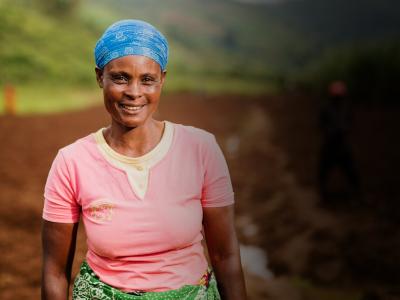At Women for Women International we use a lot of field-based vocabulary that often has a much deeper meaning and greater implications than a simple definition. In this series, we will be addressing some of these terms in the hopes of giving YOU the tools you need to have conversations about women’s empowerment and gender equality. In this blog, we’ll be discussing the term “Internally Displaced Persons (IDP)”.
Who are an IDPs?
An internally displaced person, or an IDP, is similar to a refugee in the sense that they have been forced from their homes due to conflict, natural disasters, or violence. However, IDPs do not cross the borders of their respective countries. Instead they are left in limbo without a home, but also often without the status and protection that many refugees receive.
Why do we talk about IDPs?
In 2004, the UN published their Guiding Principles on Internal Displacement, which documents the rights and guaranteed protection of IDPs. However, this document is simply a list of guidelines. There is no universal legally binding document that protects IDPs, and since the creation of the guiding principles the internally displaced population has only grown.
According to the UNHCR there were 40.3 million internally displaced persons in 2016, making up more than two thirds of all forcibly displaced persons worldwide, and that number has doubled since 2000 as conflict continues to rise around the world. Today, there are twice as many IDPs as there are refugees, yet the needs of internally displaced persons are often not taken into account by policy-makers and international organizations.
Despite there being such a large population of IDPs, there is not a lot of research about the conditions under which they live or about the long-term effects of being internally displaced.
Taking a closer look
Some of the largest populations of internally displaced persons are in the Women for Women International works in, including Iraq, DRC, Nigeria, South Sudan, and Afghanistan
After years of conflict in South Sudan, there were an estimated 1.6 million IDPs by the time a peace accord was signed in 2015. Despite the agreement, war and instability continues to haunt the country. Elizabeth was one of these IDPs. She recalls that during the war it was extremely difficult to find food, clothing, or shelter, as she and her family had been forced from their home. Because of the war, they had no access to medical care, and so when her husband caught an infectious disease and passed away, she was left with four daughters to take care of by herself. She had to get a job as a weapon-carrier and cook for the soldiers, putting her right at the heart of the conflict she had been trying to escape.
Once the peace agreement was signed, Elizabeth regained hope. She joined Women for Women International and started her own business with her stipend money. She says, “I would not have been able help my two children who are studying in high school if Women for Women International did not support me.”
However, conflict in South Sudan is far from vanquished, and the number of internally displaced people in South Sudan has risen to 1.9 million.
The war took much more from Elizabeth than just her home. It also took her security and her husband. Being internally displaced leaves people vulnerable and can have lasting impacts on a person’s mental and physical health.
Now that you know more about internally displaced persons, we challenge you to start a conversation about the harsh realities of conflict.

